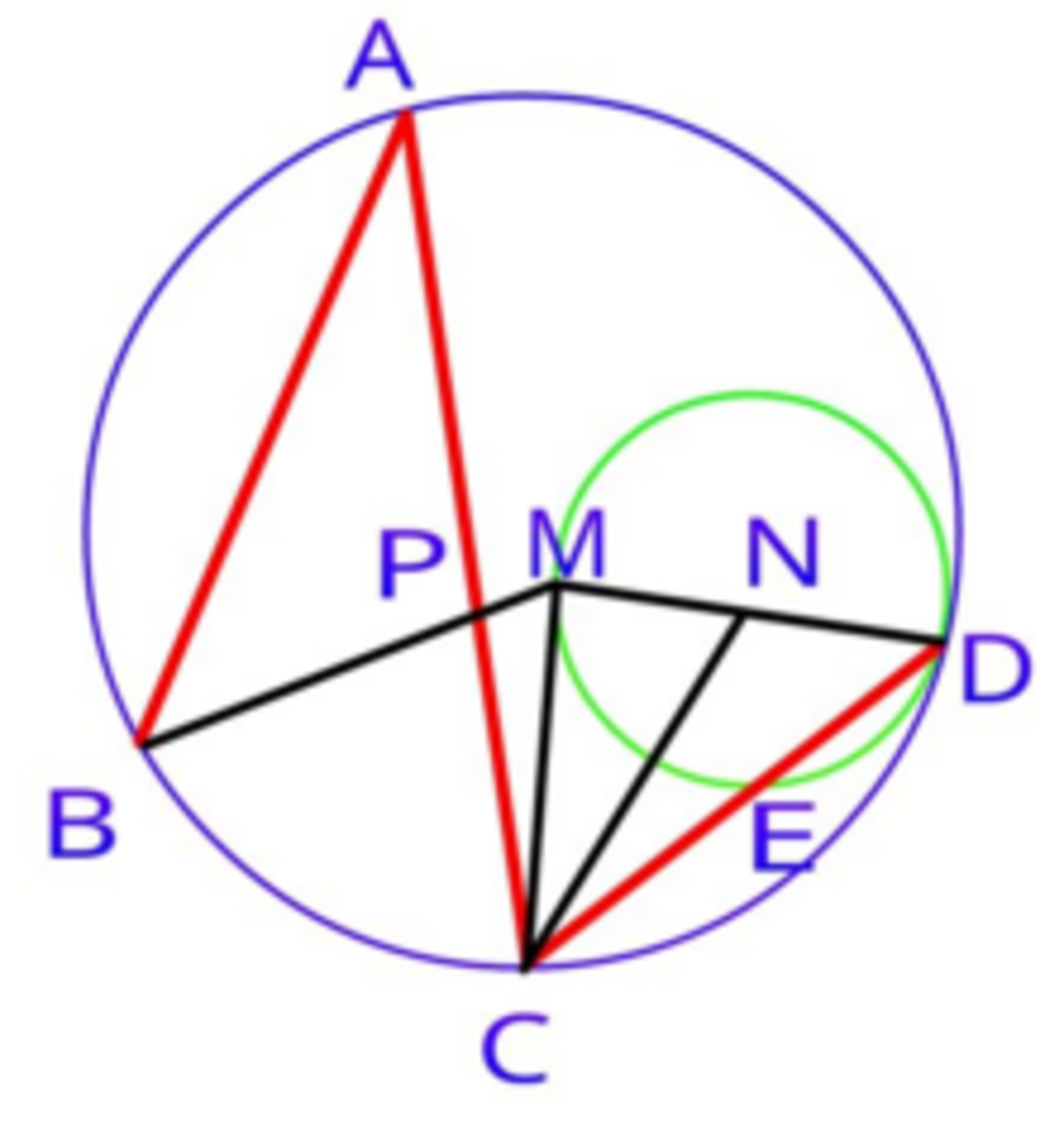This should be easy! Right? Part - 3

The figure above represents two circles where A B = 5 units, ∠ B A C = 3 0 ∘ , ∠ B M D = 1 3 5 ∘ , M D = 3 . 3 units and N is the mid point of M D .
C N C D × C M = b e b − d + e a c − d + e
The equation above holds true for positive integers a , b , c , d and e with b , d and e square-free, a > b , and a , b are coprime.
Find a + b + c + d + e .
Clarification : M D a diameter of the smaller circle. M is the centre of the larger circle. The two circles tangential at D .
Try Part-1 and Part-2 also.
The answer is 50.
This section requires Javascript.
You are seeing this because something didn't load right. We suggest you, (a) try
refreshing the page, (b) enabling javascript if it is disabled on your browser and,
finally, (c)
loading the
non-javascript version of this page
. We're sorry about the hassle.
1 solution
Thanks for posting a solution to my problem. I thought no will be willing to do so and in the end I will have to do it myself.
Log in to reply
Is there a better / more direct approach to this problem? I quite like it, but this solution makes it look really painful
Log in to reply
Sir, when I was making this problem, even I used the same method as given in the solution of @คลุง แจ็ค
Is this your own problem ? It is really cool.
Great problem. But isn't there any approach that uses less computations?
Log in to reply
Even I did it the same way as given in the solution, you can say that I deliberately made it so that its calculations are hard to do.
First let the radius of the bigger circle to be r and let the angle between sides MD and MC be θ .
Then,
C D 2 = 2 r 2 − 2 r 2 cos θ
C N 2 = r 2 + 4 r 2 − r 2 cos θ
C M 2 = r 2
C N 2 C D 2 × C M 2 = r 2 ( 4 5 − cos θ ) 2 r 2 ( 1 − cos θ ) × r 2
θ = 1 3 5 − 2 × 3 0 = 7 5 = 3 0 + 4 5 . Because BMC is twice BAC by the Euclidean geometry theorem.
cos θ = cos 4 5 + 3 0 = 2 2 3 − 1
C N 2 C D 2 × C M 2 = r 2 ( 4 5 − cos θ ) 2 r 2 ( 1 − cos θ ) × r 2 = ( 4 5 − 2 2 ( 3 − 1 ) ) 2 ( 1 − 2 2 ( 3 − 1 ) ) × r 2
= ( 5 − 6 − 2 ) 2 ( 4 − 6 − 2 ) × r 2
r = 3 . 3 = 1 0 3 3
= ( 5 − 6 − 2 ) 2 ( 4 − 6 − 2 ) × ( 1 0 3 3 ) 2
C N C D × C M = = ( 5 − 6 − 2 ) 2 ( 4 − 6 − 2 ) × ( 1 0 3 3 ) 2
= ( 5 − 6 − 2 ) 2 ( 4 − 6 − 2 ) × ( 1 0 3 3 )
= ( 5 − 6 − 2 ) ( 4 − 6 − 2 ) × ( 5 2 3 3 )
= ( 5 2 3 3 ) × ( 5 − 6 − 2 ) ( 4 − 6 − 2 )
= ( 5 2 3 3 ) × ( 5 − 6 − 2 ) ( 4 − 6 − 2 ) = ( b e a ) × ( b − d − e ) ( c − d − e )
So,
a = 3 3 , b = 5 , c = 4 , d = 6 , e = 2
a + b + c + d + e = 3 3 + 5 + 4 + 6 + 2 = 5 0